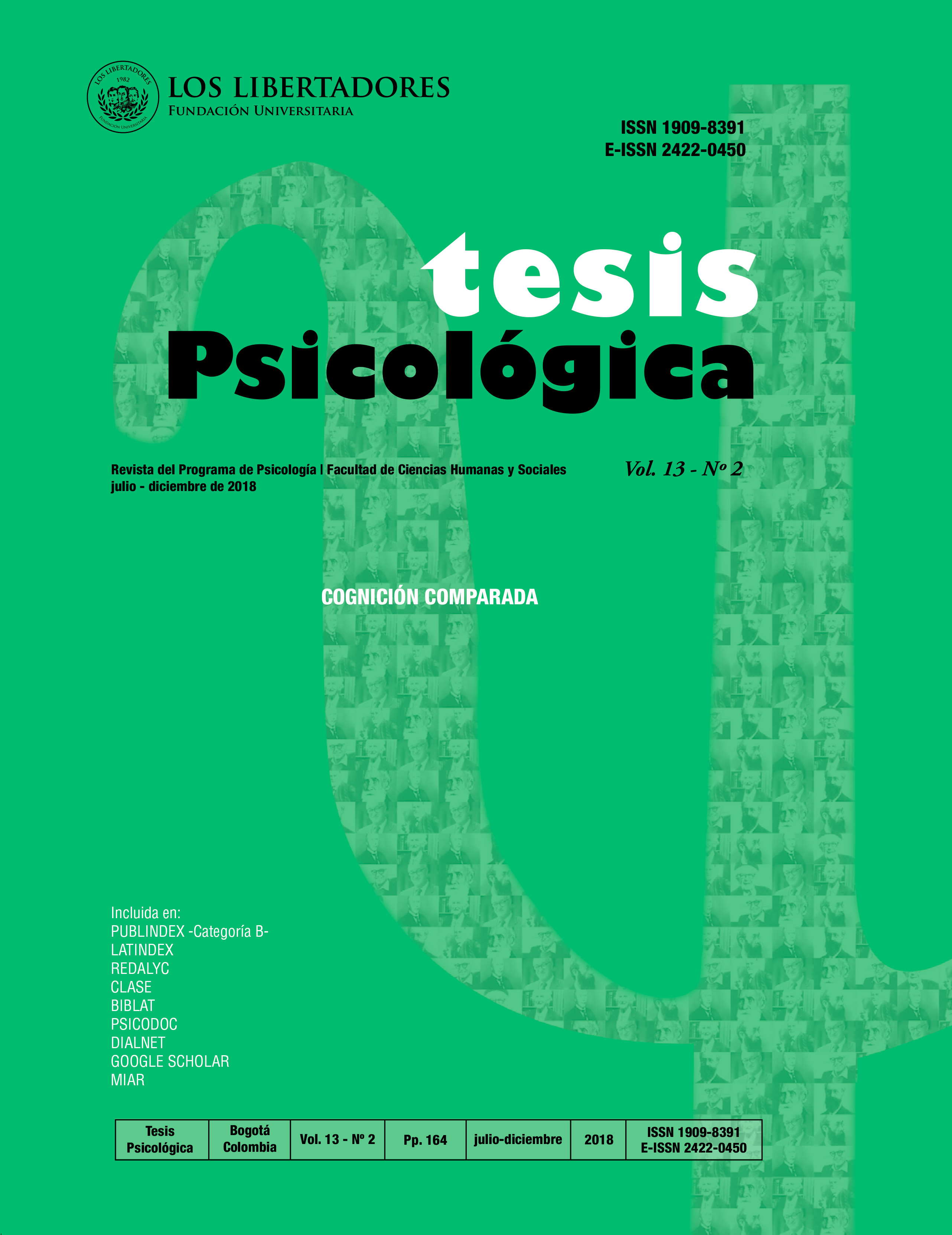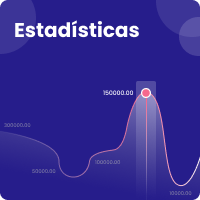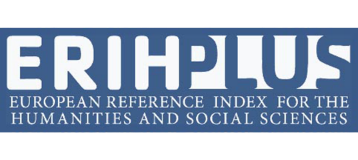Los anfibios como modelo para el estudio de la evolución de la cognición espacial. Procedimientos utilizados en el registro comportamental y sus bases neurales
DOI:
https://doi.org/10.37511/tesis.v13n2a3Resumen
Los anfibios constituyen un grupo filogenéticamente muy antiguo que se caracteriza por ser representantes de la transición del medio acuático al terrestre, con todas las implicaciones que esto tuvo en la organización de su sistema nervioso. El uso de este modelo animal para estudiar la evolución de la cognición espacial brinda la ventaja de poseer un sistema nervioso simple, que carece de neocorteza, lo cual permite indagar los circuitos cerebrales básicos que subyacen a esta conducta. Empleando una aproximación comparativa, en este artículo se describen los distintos procedimientos y dispositivos experimentales que se utilizan para el estudio de las habilidades de orientación y navegación espacial en anfibios y sus bases neurales. La capacidad de aprendizaje espacial es fundamental para la supervivencia de los individuos, pudiendo incluir estrategias que involucran claves visuales del ambiente e información auto-referencial. Teniendo en cuenta toda la información acumu-lada hasta el momento en anfibios, tanto en condiciones controladas de laboratorio como en ambientes natu-rales, es posible concluir que las propiedades de esta habilidad cognitiva han sido mayormente conser-vadas a lo largo de la evolución.
Descargas
Referencias
Balero, M., Scardamaglia, R. C., Sotelo, M. I., Fernández, R. C., Reboreda, J. C. & Muzio, R. N. (2017). Dinámica de uso del espacio en el sapo terrestre Rhinella arenarum. 1ra Reunión de Biología del Comportamiento del Cono Sur. Comporta 2017-VI JUCA. Facultad de Ciencias Exactas y Naturales (UBA). Buenos Aires.
Ball, G. F. & Gentner, T. Q. (1998). They're playing our song: gene expression and birdsong perception. Neuron, 21, 271-274.
Bassani, T. B., Bonato, J. M., Machado, M. M., Cóppola-Segovia, V., Moura, E. L., Zanata, S. M. & Vital, M. A. (2018). Decrease in adult neurogenesis and neuroinflammation are involved in spatial memory impairment in the streptozotocin-induced model of sporadic Alzheimer’s disease in rats. Molecular Neurobiology, 55(5), 4280-4296.
Bingman, V. P. & Muzio, R. N. (2017). Reflections on the Structural-Functional Evolution of the Hippocampus: What is the Big Deal about a Dentate Gyrus? Brain, Behavior and Evolution, 90, 53-61.
Bingman, V. P., Erichsen, J. T., Anderson, J. D., Good, M. A. & Pearce, J. M. (2006). Spared feature-structure discrimination but diminished salience of environmental geometry in hippocampal lesioned homing pigeons (Columba livia). Behavioral Neuroscience, 120, 835-841.
Bingman, V. P., Rodríguez, F., & Salas, C. (2017). e hippocampus in nonmammalian vertebrates. En: J. Kaas. (ed). Evolution of Nervous Systems, pp 479-489. Oxford: Academic Press.
Brattstrom, B. H. (1990). Maze learning in the fire#bellied toad, Bombina orientalis. Journal of Herpetology, 24(1), 44-47.
Bye, C. M., Hong, N. S., Moore, K., Deibel, S. H. & McDonald, R. J. (2018). e effects of pool shape manipulations on rat spatial memory acquired in the Morris water maze. Learning and Behavior, 1-9. doi: 10.3758/ s13420-018-0319-0
Cheng, K. (1986). A purely geometric module in the rat’s spatial representation. Cognition, 23, 149-178.
Cheng, K. & Newcombe, N. S. (2005). Is there a geometric module for spatial orientation? Squaring theory and evidence. Psychonomic Bulletin & Review, 12, 1-23.
Cheng, K., Huttenlocher, J. & Newcombe, N. S. (2013). 25 years on research on the use of geometry in spatial orientation: a current theoretical perspective. Psychonomic Bulletin and Review, 20, 1033-1054.
Clayton, D. F. (1997). Role of gene regulation in song circuit development and song learning. Journal of Neurobiology, 33, 549-571.
Daneri, M. F. & Muzio, R. N. (2013). El aprendizaje espacial y su relevancia en anfibios. Revista Argentina de Ciencias del Comportamiento, 5(3), 38-49.
Daneri, M. F., Casanave, E. B. & Muzio, R. N. (2011). Control of spatial orientation in terrestrial toads (Rhinella arenarum). Journal of Comparative Psychology, 125(3), 296-307.
Daneri, M. F., Casanave, E. B., & Muzio, R. N. (2015). Use of local visual landmarks for spatial orientation in toads (Rhinella arenarum): e role of distance to a goal. Journal of Comparative Psychology, 129(3), 247-255.
Delcourt, J., Miller, N. Y., Couzin, I. D., & Garnier, S. (2018). Methods for the effective study of collevtive behavior in a radial arm maze. Behavior Research Methods, 50(4), 1673-1685. doi: 10.3758/s13428-018-1024-9
Dicke, U. & Roth, G. (2009). Evolution of the Amphibian nervous system. In: J. H. Kaas. (Ed.). Evolutionary Neuroscience, Chapter 11, pp. 169-233, Elsevier. Academic Press.
Ferguson, D. E. (1971). e sensory basis of orientation in amphibians. Annual N.Y. Academy of Sciences, 188, 30-36.
Gallardo, J. M. (1974). Anfibios de los alrededores de Buenos Aires. Buenos Aires: Eudeba.
Gallistel, C. R. (1990). The organization of learning. In: Cap. 6. e MIT Press, Cambridge, Massachusetts.
González, A., López, J. M., Morona, R. & Moreno, N. (2017). e organization of the amphibian central nervous system. En J. Kaas (Ed.), Evolution of the nervous systems. 2nd Ed. Elsevier.
Greding, E. J. (1971). Comparative rates of learning in frogs (Ranidae) and toads (Bufonidae). Caribbean Journal of Science, 11(3-4), 203-208.
Grobéty, M. C. & Schenk, F. (1992). Spatial learning in a three-dimensional maze. Animal Behaviour, 43, 1011-1020.
Hafting, T., Fyhn, M., Molden, S., Moser, M. B. & Moser, E. I. (2005). Microstructure of a spatial map in the entorhinal cortex. Nature, 436(7052), 801-806.
Hagan, J. J., Salamone, J. D., Simpson, J., Iversen, S. D. & Morris, R. G. M. (1988). Place navigation in rats is impaired by lesions of medial septum and diagonal band but not nucleus basalis magnocellularis. Behavioural Brain Research, 27(1), 9-20.
Hayman, R., Verriotis, M. A., Jovalekic, A., Fenton, A. A. & Jeffery, K. J. (2011). Anisotropic encoding of three-dimensional space by place cells and grid cells. Nature Neuroscience, 14, 1182-1188.
Holbrook, R. & Burt de Perera, T. (2009). Separate encoding of vertical and horizontal components of space during orientation in fish. Animal Behaviour, 78, 241-245.
Holmes, C. A., Nardi, D., Newcombe, N. S. & Weisberg, S. M. (2015). Children’s use of slope to guide navigation: Sex differences relate to spontaneous slope perception. Spatial Cognition and Computation, 15, 170-185.
Ingle, D. & Sahagian, D. (1973). Solution of a spatial constancy problem by goldfish. Physiological Psychology, 1, 83-84.
Kesner, R. P., Bolland, B. L. & Davis, M. (1993). Memory of spatial location, motor responses and objects: Triple dissociation among the hippocampus, caudate nucleus and extrastriate visual cortex. Experimental Brain Research, 93, 462-470.
Kosaki, Y., Pearce, J. M. & McGregor, A. (2018). e response strategy and the place strategy in a plus#maze have different sensitivities to devaluation of expected outcome. Hippocampus, 28, 484-496.
Laberge, F., Feldhoff, R. C., Feldhoff, P. W. & Houck, L. D. (2008). Courtship pheromone-induced c-Fos-like immunolabeling in the female salamander brain. Neuroscience, 151(2), 329-339.
Leclerc, C., Duprat, A. M. & Moreau, M. (1999). Noggin upregulates Fos expression by a calcium#mediated pathway in amphibian embryos. Development, Growth and Differentiation, 41(2), 227-238.
Lee, S. A., Sovrano, V. A. & Spelke, E. S. (2012). Navigation as a source of geometric knowledge: Young children’s use of length, angle, distance, and direction in a reorientation task. Cognition, 123, 144-161.
López, J. C., Broglio, C, Rodríguez, F, inus-Blanc, C. & Salas, C. (1999). Multiple spatial learning strategies in golfish (Carassius auratus). Animal Cognition, 2, 109-120.
Mayer, U. & Bischof, H. J. (2012). Brain activation pattern depends on the strategy chosen by zebra finches to solve an orientation task. Journal of Experimental Biology, 215, 426-434.
Mayer, U., Pecchia, T., Bingman, V. P., Flore, M. & Vallortigara, G. (2016). Hippocampus and medial striatum dissociation during goal navigation by geometry or features in the domestic chick: an immediate early gene study. Hippocampus, 26, 27-40.
Moreno, N. & González, A. (2004). Localization and Connectivity of the Lateral Amygdala in Anuran Amphibians. e Journal of Comparative Neurology, 479, 130-148.
Moser, E. I., Kropff, E. & Moser, M. B. (2008). Place cells, grid cells, and the brain's spatial representation system. Annual Review of Neuroscience, 31, 69-89. doi: 10.1146/annurev.neuro.31.061307.090723
Muzio, R. N. (1999). Aprendizaje instrumental en anfibios. Revista Latinoamericana de Psicología, 31(1), 35-47.
Muzio, R. N. (2013). Aprendizaje en anfibios, el eslabón perdido: Un modelo simple cerebral en el estudio de conductas complejas. Cuadernos de Herpetología, 27(2), 87-100.
Muzio, R. N., Daneri, M. F. & Sotelo, M. I. (2017). Aprendizaje y Memoria Espacial en Anfibios. Consideraciones generales y aspectos evolutivos. En J. Nieto & R. Bernal-Gamboa (Eds.), En: Estudios Contemporáneos en
Cognición Comparada (pp. 111-178). Ciudad de México: Editorial UNAM.
Nardi, D. & Bingman, V. P. (2009). Pigeon (Columba livia) encoding of a goal location: The relative importance of shape geometry and slope information. Journal of Comparative Psychology, 123, 204-216.
Nardi, D., Funk, A. Y., Newcombe, N. S. & Shipley, T. F. (2009). Reorientation by slope cues in humans. Cognitive Processing, 10, 260-262.
Nardi, D., Newcombe, N. S. & Shipley, T. F. (2011). e world is not flat. Can people reorient using slope? Journal of Experimental Psychology: Learning, Memory, and Cognition, 37(2), 354-367. doi: 10.1037/a0021614
Neary, T. J. (1988). Forebrain auditory pathways in ranid frogs. En: B. Fritzsch., M.J. Ryan, W. Wilczynski., T.E. Hetherington. & W. Walkowiak. (eds). The Evolution of the Amphibian Auditory System, pp. 233-252. New York: Wiley.
Nieuwenhuys, R., Ten Donkelaar, H. J. & Nicholson, C. (1998). e central nervous system of vertebrates. Berlin: Springer-Verlag.
Northcutt, R. G. (1981). Evolution of the telencephalon in nonmammals. Annual Review of Neuroscience, 4, 301-350.
Northcutt, R. G. (1995). e forebrain of gnathostomes: In search of a morphotype. Brain, Behavior and Evolution, 46, 275-318.
Northcutt, R. G. & Ronan, M. (1992). Afferent and efferent connections of the bullfrog medial pallium. Brain, Behavior and Evolution, 40, 1-16.
Northcutt, R. G. & Kicliter, E. (1980). Organization of the amphibian telencephalon. In S.O. Ebbesson (Ed.), Comparative neurology of the telencephalon, pp. 203-255. Plenum: New York.
Ocaña, F. M., Uceda, S., & Rodríguez, F. (2017). Dynamics of Goldfish subregional Hippocampal Pallium activity throughout spatial memory formation. Brain, Behavior and Evolution, 90, 154-170.
O’Keefe, J. & Dostrovsky, J. (1971). e Hippocampus as a Spatial Map, Preliminary Evidence from Unit Activity in the Freely Moving Rat. Brain Research, 34, 171-175.
O ́Keefe, J. & Nadel, L. (1978). e Hippocampus as a Cognitive map. Clarendon Press: Oxford.
Packard, M. G. & McGaugh, J. L. (1996). Inactivation of hippocampus or caudate nucleus with lidocaine differentially affects expression of place and response learning. Neurobiology of Learning and Memory, 65, 65-72.
Packard, M. G., Hirsh, R. & White, N. M. (1989). Differential effects of fornix and caudate nucleus lesions on two radial maze tasks: evidence for multiple memory systems. Journal of Neuroscience, 9, 1465-1472.
Pearce, J. M., Good, M. A., Jones, P. M. & McGregor, A. (2004). Transfer of spatial behavior between different environments: Implications for theories of spatial learning and for the role of the hippocampus in spatial learning. Journal of Experimental Psychology: Animal Behavior Processes, 30(2), 135-147.
Pearce, J. M., Graham, M., Good, M. A., Jones, P. M. & McGregor, A. (2006). Potentiation, overshadowing, and blocking of spatial learning based on the shape of the environment. Journal of Experimental Psychology: Animal Behavior Processes, 32(3), 201-214.
Puddington, M. M. & Muzio, R. N. (2016). Relación entre conducta y activación de áreas cerebrales. Empleo de la técnica de AgNOR en psicología comparada. Interdisciplinaria, 33(1), 1-13.
Puddington, M. M., Daneri, M. F., Papini, M. R. & Muzio, R. N. (2016). Telencephalic Neural activation after passive avoidance learning in the terrestrial toad Rhinella arenarum. Behavioural Brain Research, 315, 75-82.
Rescorla, R. A. & Wagner, A. R. (1972). A theory of pavlovian conditioning: Variations in the effectiveness of reinforcment and nonreinforcement. En: A. H. Black & W. F. Prokasy (Eds.). Classical conditioning II: Current theory and research (pp. 64-99). New York: Appleton-Century-Crofts.
Roden, K., Endepols, H. & Walkowiak, W. (2005). Hodological characterization of the septum in anuran amphibians: I. Afferent connections. Journal of Comparative Neurology, 483, 415-436.
Salas, C., Broglio, C. & Rodríguez, F. (2003). Evolution of forebrain and spatial cognition in vertebrates: Conservation across diversity. Brain, Behavior and Evolution, 62, 72-82.
Shettleworth, S. J. (2010). Getting around: Spatial cognition (Chapter 8). In S. Shettleworth (Ed.), Cognition, Evolution, and Behavior (pp. 261-310). Oxford: Oxford University Press.
Shimizu, T., Bowers, A. N., Budzynski, C. A., Kahn, M.C. & Bingman, V. P. (2004). What does a pigeon (Columba livia) brain look like during homing? Selective examination of ZENK expression. Behavioral Neuroscience, 118, 845-851.
Sinsch, U. (1987). Orientation behavior of toads (Bufo bufo) displaced from the breeding site. Journal of Comparative Physiology A, 161, 715-727.
Sinsch, U. (1990). Migration and orientation in anuran amphibians. Ethology, Ecology and Evolution, 2, 65-79.
Sinsch, U. (2006). Orientation and navigation in Amphibia. Marine and Freshwater Behavior and Physiology, 39(1), 65-71.
Sotelo, M. I. & Muzio, R. N. (2015). Aprendizaje Espacial y Geometría. Los Anfibios en la Evolución de los Sistemas Cognitivos Cerebrales. Revista Argentina de Ciencias del Comportamiento, 7(3), 64-78.
Sotelo, M. I., Bingman, V. P. & Muzio, R. N. (2015). Goal orientation by geometric and feature cues: spatial learning in the terrestrial toad Rhinella arenarum. Animal Cognition, 18(1), 315-323.
Sotelo, M. I., Bingman, V. P. & Muzio, R. N. (2017). Slope-based and geometric encoding of a goal location by the terrestrial toad (Rhinella arenarum). Journal of Comparative Psychology, 131(4), 362-369.
Sotelo, M. I., Bingman, V. P. & Muzio, R. N. (Inédito). Transfer of spatial learning between geometrically different shaped environments in the terrestrial toad, Rhinella arenarum. Enviado para su publicación en Animal Cognition.
Sotelo, M. I., Daneri, M. F., Bingman, V. P. & Muzio, R. N. (2016). Telencephalic neuronal activation associated with spatial memory in the terrestrial toad, Rhinella arenarum: Participation of the medial pallium in navigation by geometry. Brain, Behavior and Evolution, 88, 149-160.
Spelke, E. S., Lee, S. A. & Izard, V. (2010). Beyond core knowledge: Natural geometry. Cognitive Science, 34, 863-884.
Sutton, J. E. (2009). What is geometric information and how do animals use it? Behavioural Processes, 80, 339-343.
Tommasi, L., Chiandetti, C., Pecchia, T., Sovrano, V. A. & Vallortigara, G. (2012). From natural geometry to spatial cognition. Neuroscience and Biobehavioral Reviews, 36, 799-824.
Tommasi, L., Gagliardo, A., Andrew, R. J. & Vallortigara, G. (2003). Separate processing mechanisms for encoding of geometric and landmark information in the avian hippocampus. European Journal of Neuroscience, 17, 1695-1702.
Trere, D. (2000). AgNOR staining and quantification. Micron, 31(2), 127-131.
Tsanov, M. (2017). Speed and Oscillations: Medial Septum Integration of Attention and Navigation. Frontiers in Systems Neuroscience, 11, 67-81. doi: 10.3389/fnsys.2017.00067
Twyman, A. D., Newcombe, N. S. & Gould, T. G. (2012). Malleability in the development of spatial reorientation. Developmental Psychobiology, 3, 243-255.
Vargas, J. P., Bingman, V. P., Portavella, M. & López, J. C. (2006). Telencephalon and geometric space in goldfish. European Journal of Neuroscience, 24, 2870-2878.
Vargas, J. P., López, J. C., Salas, C. & inus-Blanc, C. (2004). Encoding of geometrical and featural spatial information by goldfish (Carassius auratus). Journal of Comparative Psychology, 118, 206-216.
Velázquez, F. N., Prucca, C. G., Etienne, O., D’Astolofo, D. S., Silvestre, D. C., Boussin, F. D. & Caputto, B. L. (2015). Brain development is impaired in c-Fos -/- mice. Oncotarget, 6, 16883-16901.
Wells, K. D. (1977). e social behavior of anuran amphibians. Animal Behaviour, 25, 666-693.
Wilczynski, W. W. & Capranica, R. R. (1984). e auditory system of anuran amphibians. Progress in Neurobiology, 22, 1-38
Wilczynski, W. W. & Endepols, H. (2007). Central Auditory Pathways in Anuran Amphibians: The Anatomical Basis of Hearing and Sound Communication. In: P.M Narins., A.S Feng., R.R Fay. & A.N Popper. (Eds.), Hearing and Sound Communication in Amphibians (pp. 221-249). New York: Springer.
Archivos adicionales
Publicado
Número
Sección
Licencia

Esta obra está bajo una Licencia Creative Commons Atribución-NoComercial-















